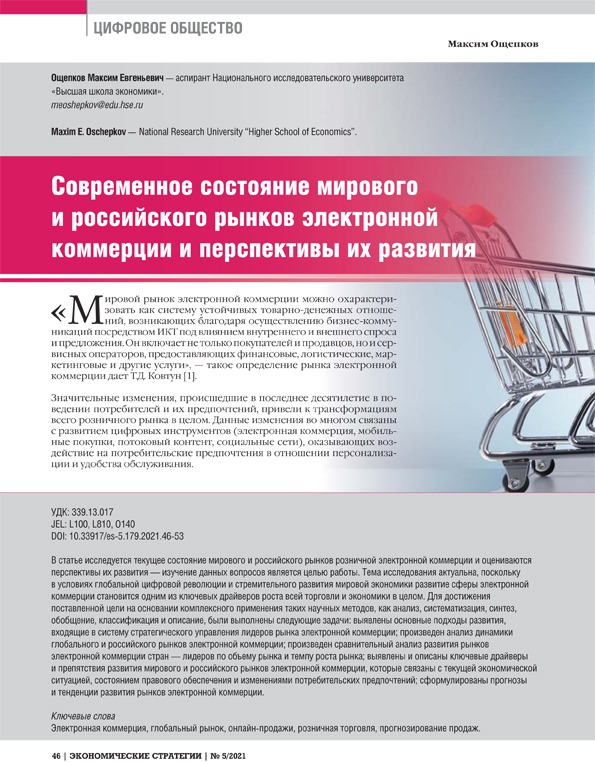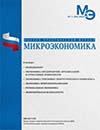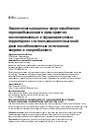Current State of the Worldwide and Russian E-commerce Markets and Prospects for Their Development
DOI: https://doi.org/10.33917/es-5.179.2021.46-53
The article examines the current state of the world and Russian retail e-commerce markets and assesses the prospects for their development — the study of these issues is the purpose of the work. The research topic is relevant, because in the context of the global digital revolution and the rapid development of the world economy, the development of e-commerce is becoming one of the key drivers of the growth of all trade and the economy. To achieve this goal, based on the integrated application of such scientific methods as analysis, systematization, synthesis, generalization, classification and description, the following tasks were performed: the main development approaches included in the strategic management system of e-commerce market leaders were identified; the dynamics of the global and Russian e-commerce markets were analyzed; a comparative analysis of the development of e-commerce markets of the leading countries in terms of market volume and market growth rate was made; the key drivers and obstacles to the development of the global and Russian e-commerce markets, which are related to the current economic situation, the state of legal support and changes in consumer preferences, are identified and described; forecasts and trends in the development of markets are formulated.





